ARTICLE AD BOX
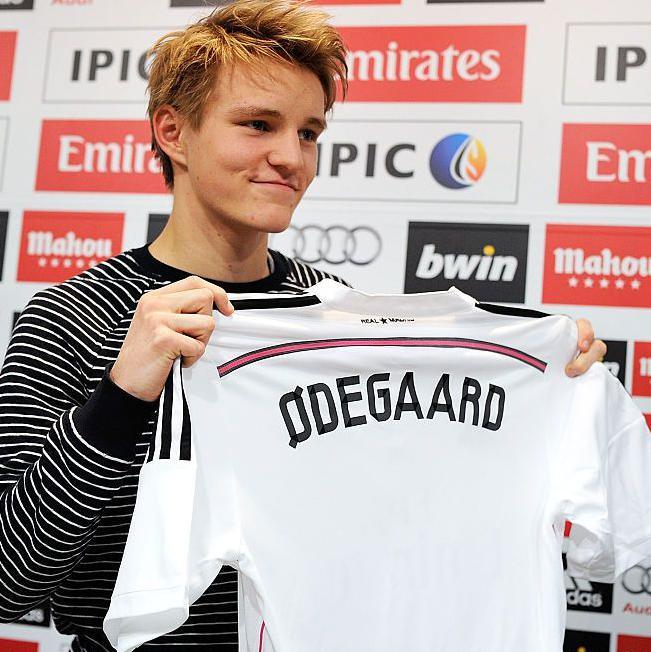 Image source, Getty Images
Image source, Getty Images
Alex Bysouth
BBC Sport Senior Journalist
A full Norway international aged 15, Martin Odegaard was used to the hype. But as photographers circled and film crews jostled at his Real Madrid unveiling, there was a sense the awkward kid in a stripey jumper was a teenage superstar struck by the galactico glare.
More than 30 clubs around Europe made enquiries for Odegaard while he was a youngster at Stromsgodset in Norway, and he visited the likes of Liverpool, Manchester United, Arsenal, Bayern Munich, Borussia Dortmund and, of course, Real.
"We got flown around in private planes and were made to feel special," Odegaard later wrote in the Players' Tribune., external
Stian Lund, Stromsgodset's academy director, accompanied the teenager, his father and two other young players from the club on one trip to Manchester City in 2013.
"We stayed there for 10 days," Lund tells BBC Sport. "I remember the report after he trained and played an Under-15s match, even though he was a year younger. The last sentence was: 'We need to sign this player!'"
European champions Real Madrid eventually won the battle for the 16-year-old's signature, with Odegaard telling the assembled media at his first news conference in the Spanish capital the La Liga giants represented the best opportunity for him to "develop as a footballer".
But five-and-a-half years later, when Odegaard left Madrid permanently to join Arsenal in August 2021 for £30m, he did so having appeared in just 11 first-team games for Real, totalling 489 minutes, without a goal or assist and having been sent out on four different loan spells, including to north London.
On Tuesday, in the Champions League quarter-finals, Odegaard will face his former side for the first time since leaving the Bernabeu on a permanent basis four years ago, proudly flexing the captain's armband when he leads the Gunners out at Emirates Stadium. He has been such a success at Arsenal, it begs the question as to why it did not work out in Madrid.
Why every club in Europe wanted Odegaard
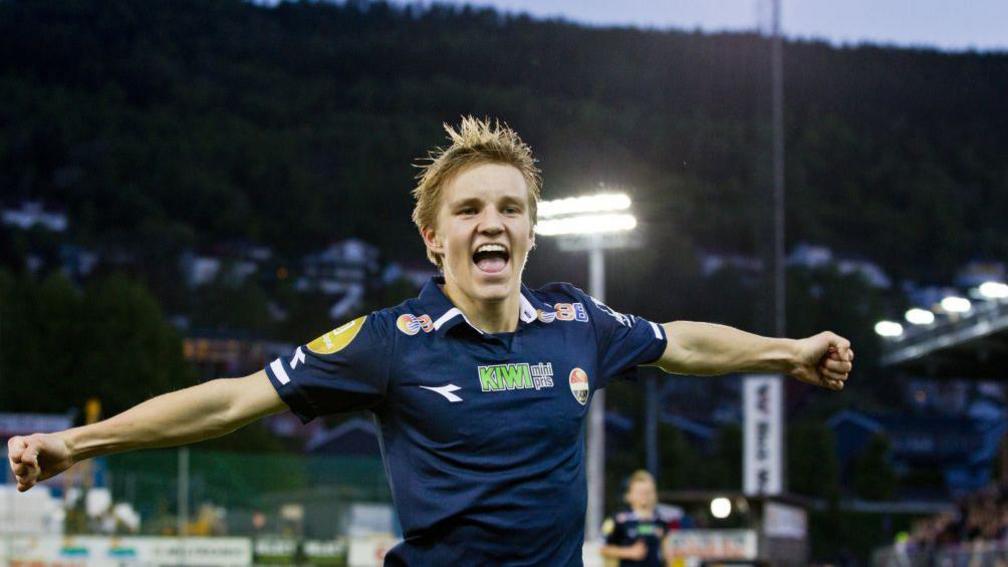 Image source, Getty Images
Image source, Getty Images
Odegaard made his Stromsgodset debut aged 15
Lund first saw Odegaard when he was 10 years old and remembers a "very tiny" kid with "amazing ball control". "I could see he was an extraordinary talent," he adds.
Just three years later, aged 13, the youngster began gaining wider attention after impressing during a first-team friendly for Stromsgodset during Ronny Deila's side's summer break as well as when training with the senior side.
"He did well," says Lund. "In the 50-50 duels he was way too light, but he had very good vision and his first touch was unbelievable, so he played good passes and kept the ball. The club really saw we had a special talent."
Lund was also struck by his obsession with football. Odegaard would be at the clubhouse every day asking for a bag of balls to train with.
Then, when he suffered a three-month injury setback aged 14, Odegaard proved his dedication and professionalism by meticulously following a recovery programme set by his uncle, Thomas, who was also the physiotherapist for the national team.
"He came every day to the clubhouse, riding on his bike from school," recalls Lund. "I was amazed. He never took any easy options. He didn't cheat on any exercises, did the exact number of repetitions. It was like watching a full-time international player. Not that he lifted that much, but he was so professional."
Odegaard also had the backing of his father, Hans Erik, who spent a decade at Stromsgodset as a player and became a coach after his retirement.
He would watch in the background "in the stands or behind the trees", until it was time to sign Odegaard's first professional contract at 15.
"I remember one clause," says Lund. "That was nobody in the club was going to tell Martin how much or how little he can train - that was the only demand, he didn't care about salary or anything.
"Just if Stromsgodset are going to put all their effort into making Martin good, we need this in the contract that nobody, not the physical coach or fitness coach or physio, is going to tell him he can't train late today or the day after a game or anything - he will train as much as he wants.
"I have never heard of that before or since!"
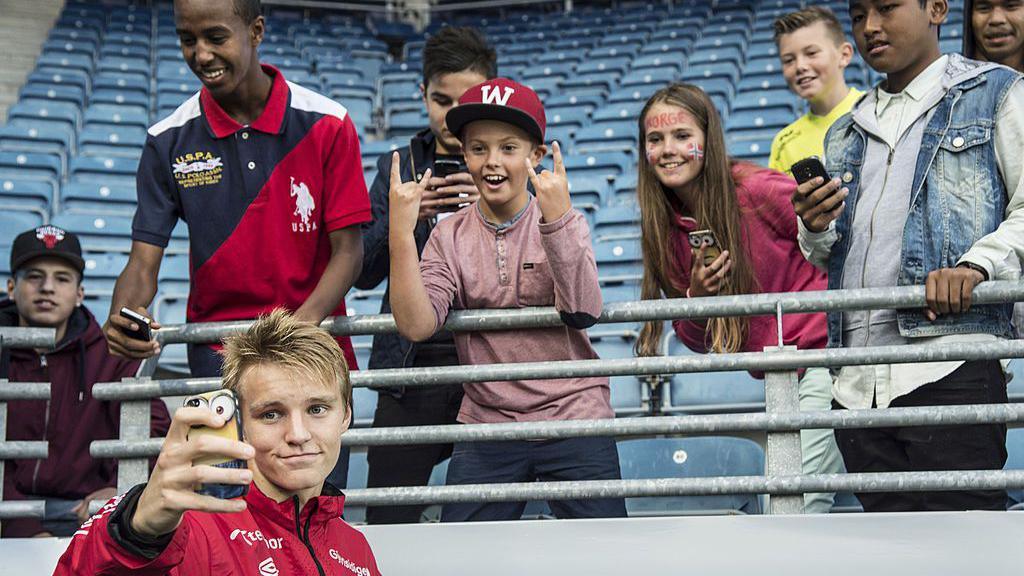 Image source, Getty Images
Image source, Getty Images
Odegaard became Norway's youngest international at 15 years and 253 days
The young Odegaard just wanted to play football. And for his part, that never changed even when returning from his many trips to train with top European clubs.
"He was very down to earth," adds Lund. "Not a big shot or having high thoughts of himself. He was back in training and being the same kid."
In pre-season 2014, Odegaard was handed more minutes with the first team - coming on late in games to gain experience.
Yet when Lund and his staff crunched the numbers for goals, assists and pre-assists, they realised the 15-year-old's output was double that of the next best player.
"It was like 'what the hell is happening here?'," he laughs.
From there, the rise was stratospheric.
He made his league debut in April, becoming the Norwegian top-flight's youngest player at 15 years and 118 days, and then its youngest scorer the following month.
Odegaard went on to make 23 appearances in the league that season, scoring five goals and providing seven assists, and in August became Norway's youngest player at 15 years and 253 days.
Dubbed one of Europe's wonderkids, the question wasn't 'if' he would leave Stromsgodset, but which of the continent's biggest clubs he would join.
In January 2015, a month after his 16th birthday, he was officially unveiled as a Real Madrid player.
The long road to north London
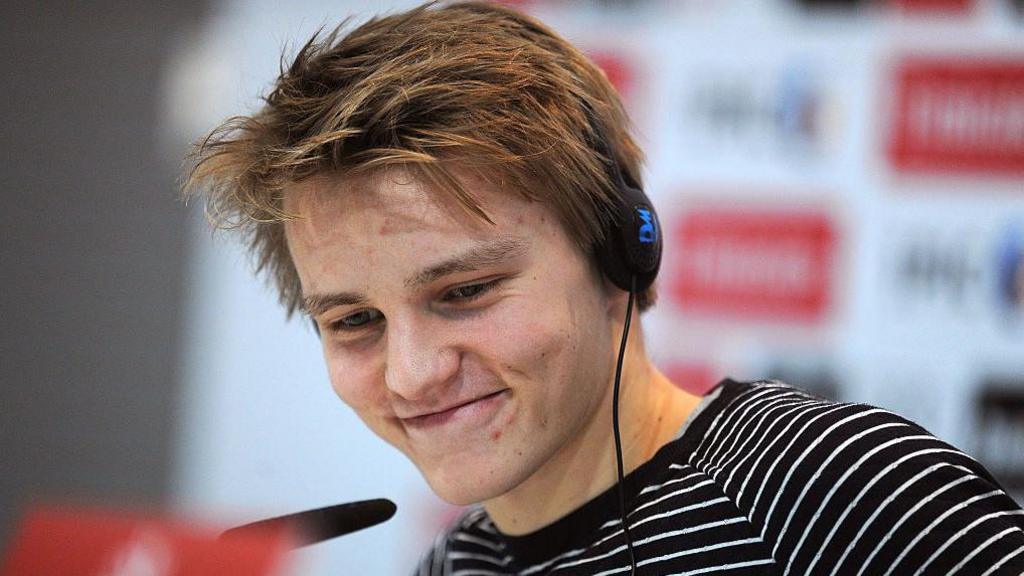 Image source, Getty Images
Image source, Getty Images
Odegaard was understandably overawed when he arrived at Real aged 16
Odegaard stepped off a flight from Norway and was whisked straight to the training ground for his medical and a news conference - dressed in the clothes he had thrown on that morning.
"I'm supposed to be this player that Real Madrid has beaten everyone to sign and I look like a random school kid they just pulled from the stadium tour," he later said.
There, the teenager signed for a reported fee of 3m euros (£2.6m), talked about how there was "no pressure" on him and he had come to develop as a footballer, whether that was with Real Madrid's first or second team, Castilla.
Odegaard's father was also offered a role coaching in Real Madrid's youth teams, while the fact they had a second team playing competitive football - which was managed by Zinedine Zidane at the time - was important to the youngster.
"He was introduced to the world's media as a teenage sensation, already earning a galactico-level salary," explains European football expert Guillem Balague.
"The club offered him a financial package that helped tilt the balance in Madrid's favour amid fierce competition from other European giants. But that decision, while lucrative, came at a cost."
Odegaard was to spend the majority of the week training with Carlo Ancelotti's European champions, a squad that included Cristiano Ronaldo, Gareth Bale, Luka Modric, Iker Casillas, Sergio Ramos, Karim Benzema and Toni Kroos.
Then, he would play for Zidane's Castilla team at the weekend in the Spanish third tier.
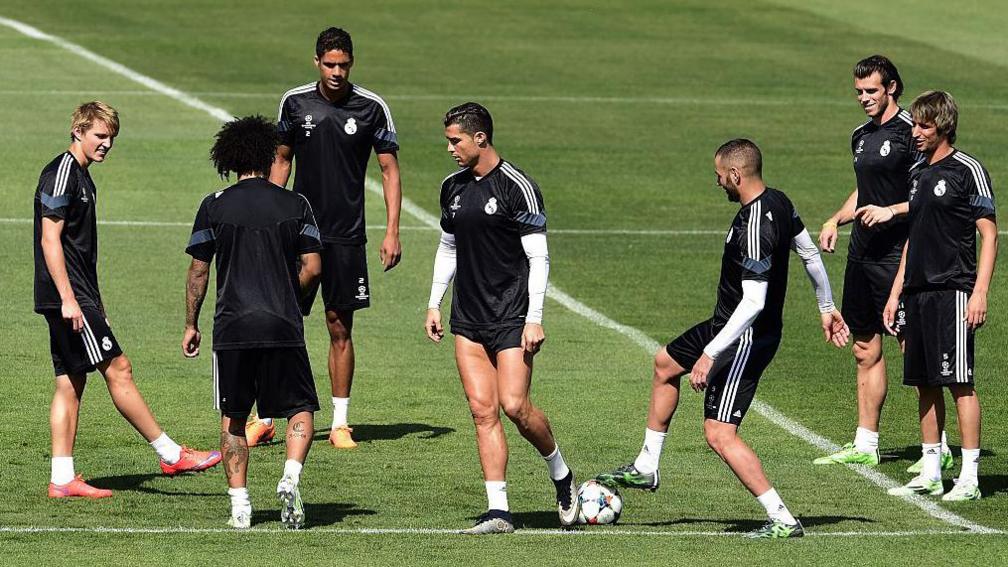 Image source, Getty Images
Image source, Getty Images
Odegaard trained with Real Madrid's first team alongside superstars such as Cristiano Ronaldo and Gareth Bale
"Inside the Castilla dressing room, some team-mates resented his privileged status," explains Balague.
"His unique contract - allowing him to train with the first team while playing for the B side - left him in a sort of limbo, never fully integrated into either squad.
"For some, he wasn't 'one of us' at Castilla. For others, he was too raw for the senior set-up."
Odegaard got his Castilla debut in early February, but made little impact off the bench in the final 21 minutes of a 2-2 draw with Athletic Club's reserve side.
He did score and assist on his first start in a 4-0 win over Barakaldo two weeks later, but they were to be his only goal contributions for Zidane's side that season across 11 appearances.
"He was constantly wary of losing the ball, more concerned with avoiding mistakes than creating magic, a shift from instinctive to cautious that blunted his natural game," adds Balague.
Yet Odegaard continued to represent Norway, and made the first-team bench for Real in April against Almeria before coming on for his debut at the Bernabeu in the final game of the season, when he replaced Ronaldo in a 7-3 win over Getafe.
"That match also marked Carlo Ancelotti's farewell - he was sacked after failing to win La Liga, the Champions League or the Copa del Rey," says Balague.
"Looking back, Ancelotti later admitted what many suspected: 'When Florentino [Perez] buys a Norwegian player, you simply have to accept it. The president decided he'd play three games with the first team as a PR move'."
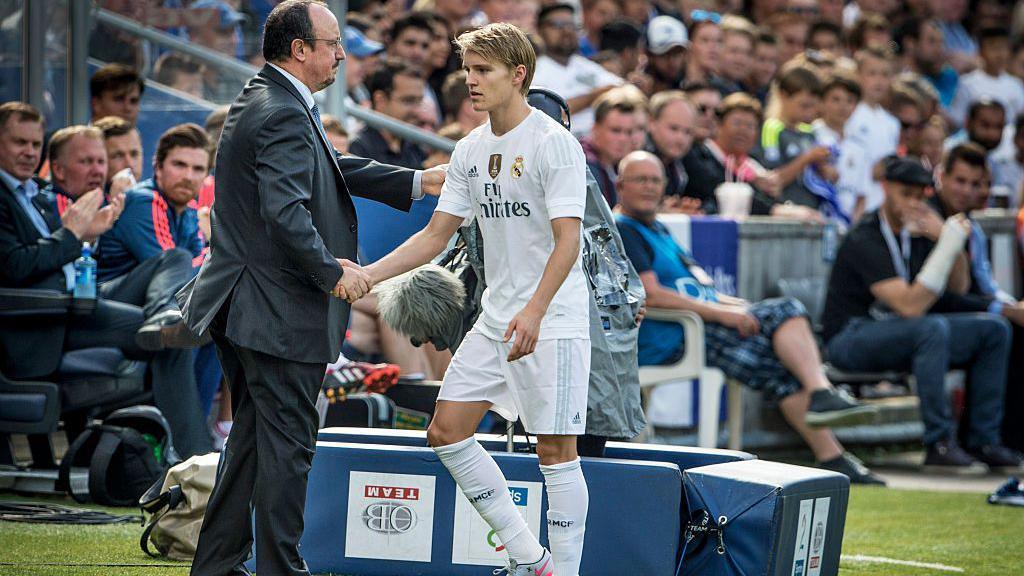 Image source, Getty Images
Image source, Getty Images
Odegaard was given only a run out in pre-season by Benitez
Under Rafael Benitez the following season, his game-time was even more restricted.
Odegaard was given 45 minutes in pre-season against Roma, "more out of obligation than belief", says Balague, adding: "His only other appearance under Benitez came in a friendly in Oslo, carefully scheduled to cash in on his popularity in Norway."
Odegaard did not play a single competitive minute for the first team, only making the bench once at Levante in March after Zidane had replaced Benitez as head coach.
He also struggled to make an impact for Castilla, with 22 of his 38 appearances coming from the bench.
"Despite flashes of talent, he never convinced his coaches or found a rhythm," says Balague.
"He also struggled to accept a role on the fringes. For a player used to being the centrepiece, adjusting to the bench was an emotional and professional challenge.
"Yet those close to him insist that Odegaard has always had a remarkable ability to weather setbacks.
"His mental strength, coupled with a monastic devotion to football - including stints at the Sierra Nevada high-performance centre to recover fitness and build stamina - meant he never lost sight of his goals."
However mentally robust Odegaard was though, he knew his development as a player was being stunted.
"With the B team, I wasn't with them regularly so I didn't find that connection. In the first team, I was just some kid who came to train," Odegaard said in the Players' Tribune.
"After a couple of years, I just wasn't progressing."
He started one game in the Copa del Rey, but in January 2017 Odegaard left for Heerenveen on an 18-month loan and remained in the Netherlands for a further season with Vitesse Arnhem, winning their player of the year award.
"Martin had some critics," says Lund, talking about his decision to join Real Madrid.
"I heard a lot about Dutch clubs like Ajax and PSV, and they wanted him to go there first.
"But it is very easy to say that. When a 16-year-old can train with Ronaldo every day with the first team of Real Madrid... it is for me silly to say he didn't choose correctly.
"I am 100% that they did the right choice. He didn't have an agent, his father ran the whole thing, and when Real Madrid came to make a deal, then they used an agent.
"Hans Erik managed the whole process and if you have competent people around you that is the best, because he doesn't have any financial intentions, he only had one intention and that is what is best for Martin."
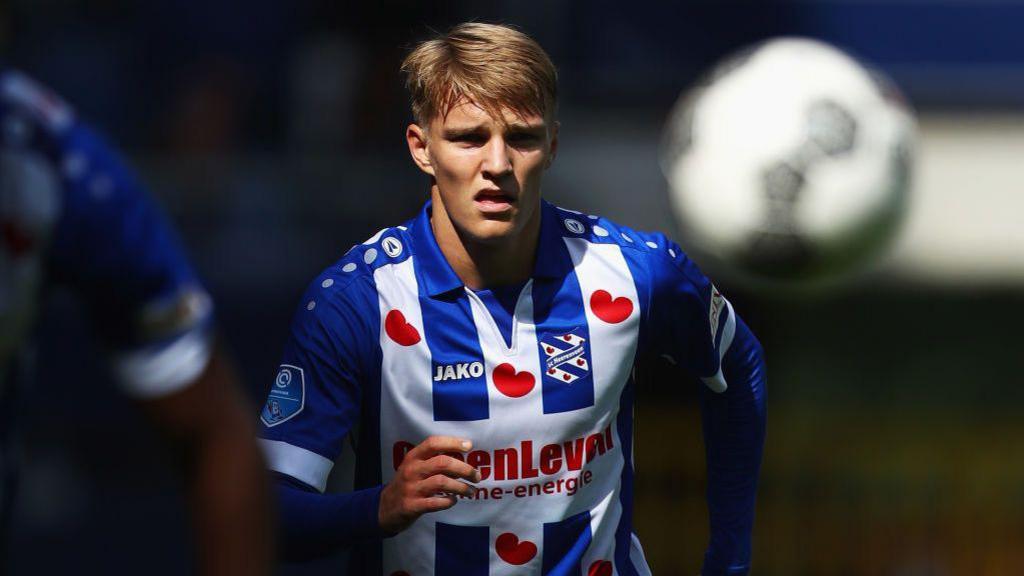 Image source, Getty Images
Image source, Getty Images
Odegaard spent 18 months on loan at Heerenveen
In summer 2019, yet to turn 21, Odegaard set out on his third loan. This time it was to Real Sociedad, where he proved he was ready for La Liga - including scoring at the Bernabeu as La Real knocked his parent club out of the Copa del Rey.
"That season at La Real, in particular, was a turning point," says Balague.
The Basques wanted him to stay another season, but Odegaard was beckoned back by Zidane to Madrid, where he started Real's first two games before struggling with a calf injury.
"He was seen by many as part of the club's future," adds Balague. "But once again, he couldn't crack the midfield trio of Modric, Kroos and Casemiro.
"Zidane gave him sporadic minutes, often out of position. By then, Odegaard had lost confidence - the rhythm and belief that made him stand out at Real Sociedad seemed to vanish.
"He wasn't helped by untimely fitness struggles. He was clearly short of his best. That moment, potentially his real audition, slipped through his fingers."
Having made just nine appearances in the first half of the season, a desire for first-team football led him to another loan move, this time to Arsenal.
That summer, after a productive spell in England, Odegaard returned to Madrid where Ancelotti had been reappointed manager.
Balague says no guarantee or "clarity of continuity" regarding his playing time was the "final straw" behind Odegaard leaving the Spanish capital permanently in August 2021.
"He had a frank conversation with Ancelotti," explains Balague. "The Italian was honest: the competition would be fierce. In Odegaard's mind, that meant he wouldn't play. He wanted to feel important. To build something.
"Perhaps more importantly, there was a deeper disconnect. He never quite felt at home at Madrid."
That may be true, but Odegaard has never complained about his time in Madrid.
"I learned so much about what it takes to reach the top," he has said.
Yet he never really found a home until he arrived at Arsenal. In north London, Odegaard was finally able to settle and Lund, who first watched him 16 years ago as a young kid at Stromsgodset, still proudly tunes in every week to watch him play.
"It is hard for me to look back and see he was going to be a captain for Arsenal," he explains.
"I would ask if you were drunk if you said that back then. But we all knew he was something special. He is a fantastic player, and an even better person."
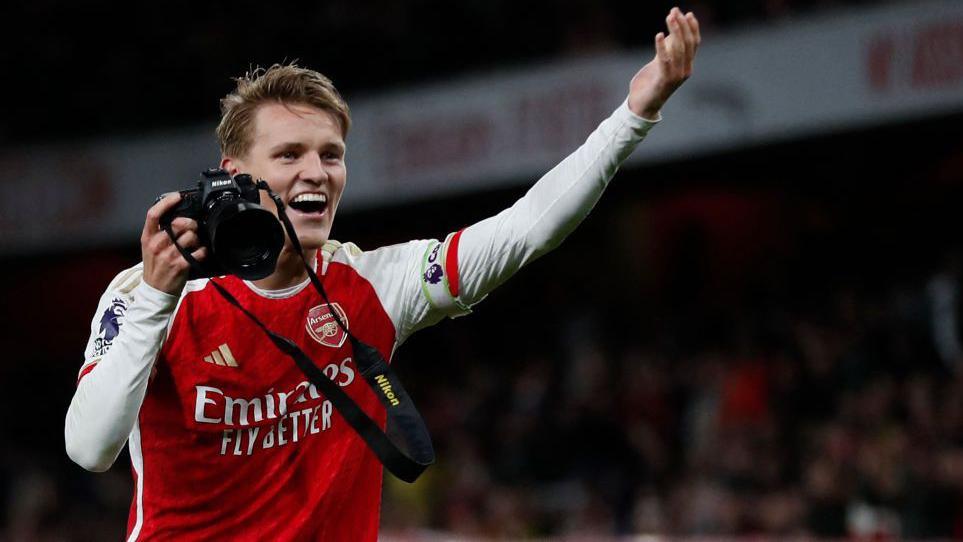 Image source, Getty Images
Image source, Getty Images
Odegaard joined Arsenal on a permanent basis in 2021 for £30m

 1 week ago
11
1 week ago
11
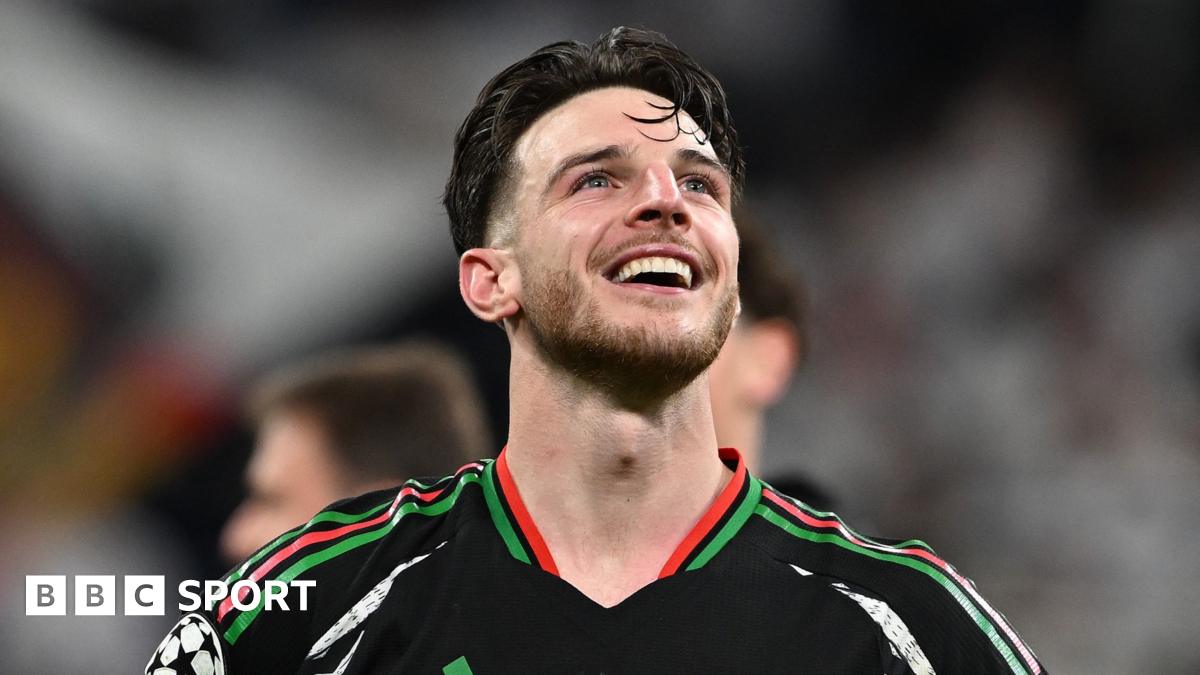
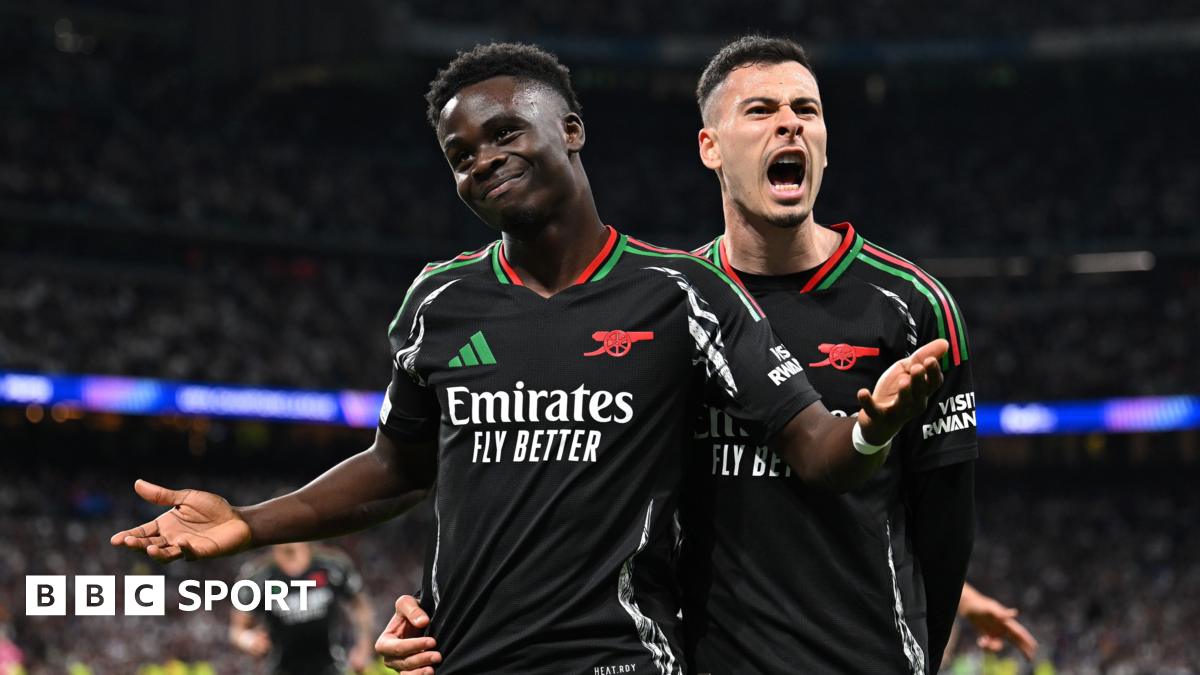
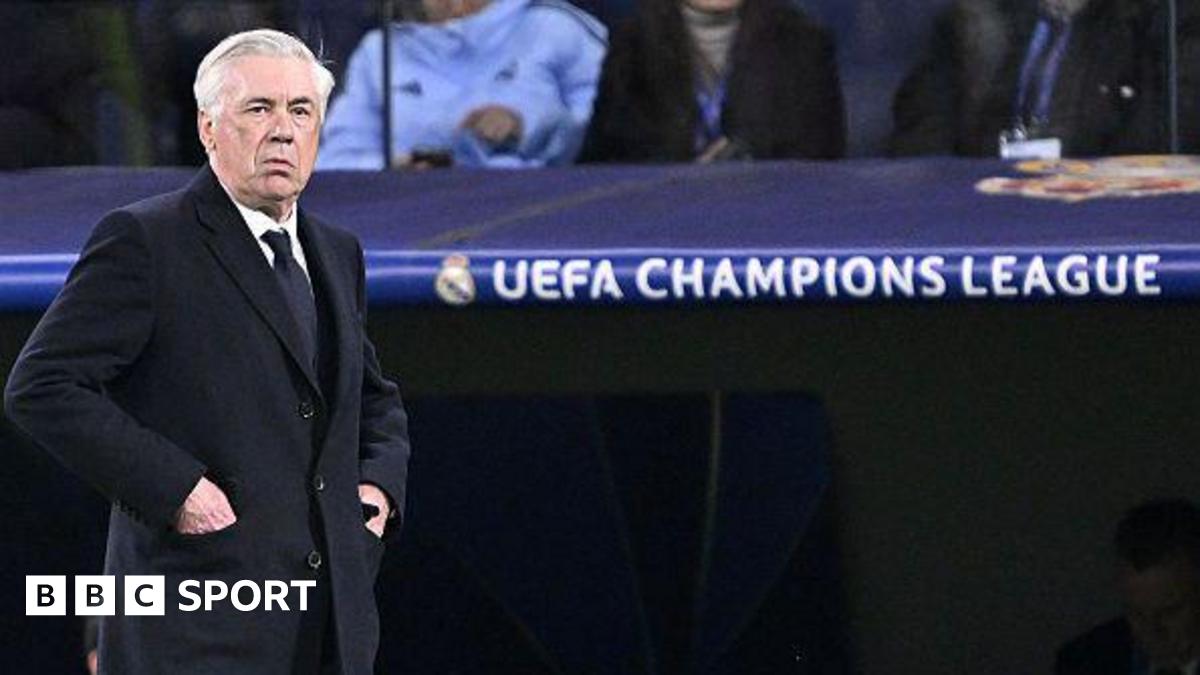
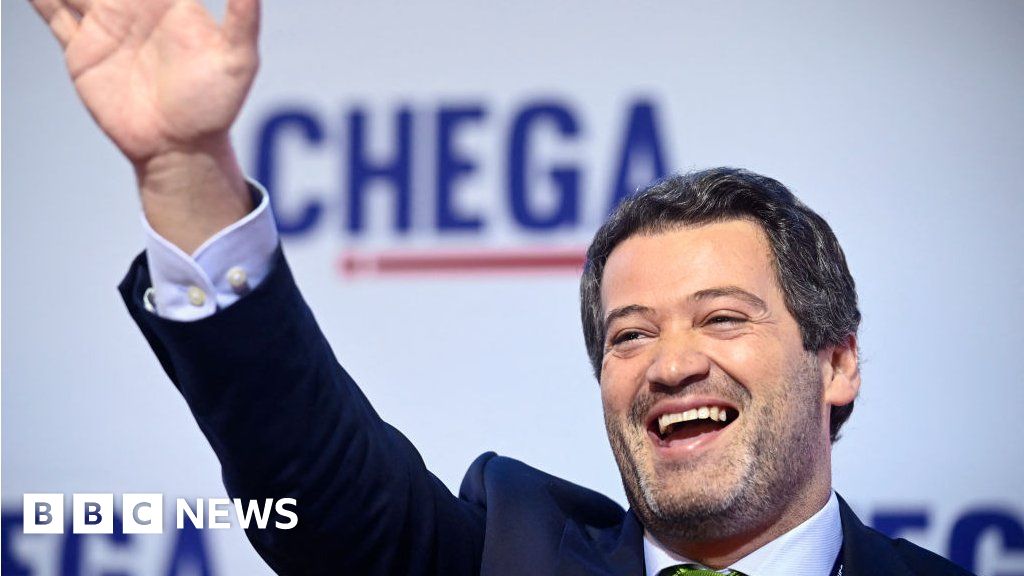

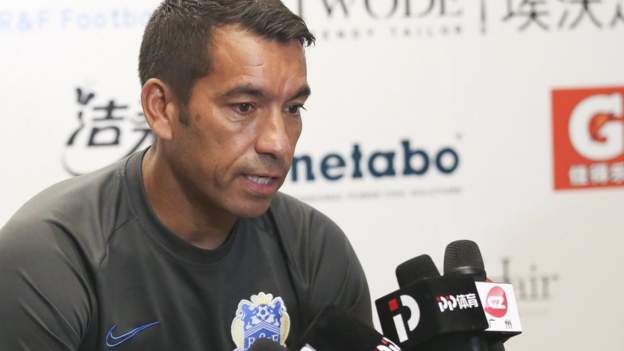

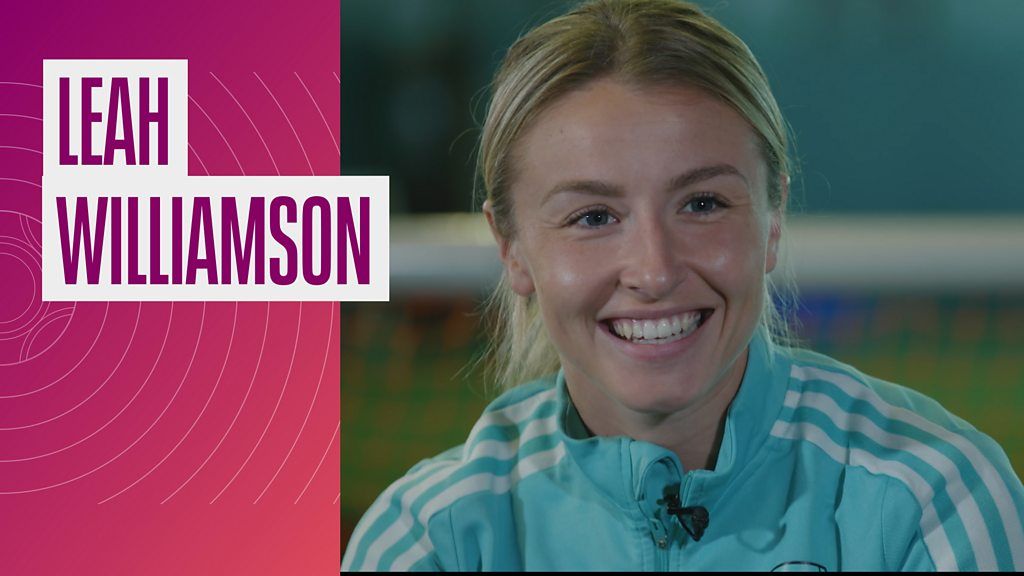
 English (US) ·
English (US) ·